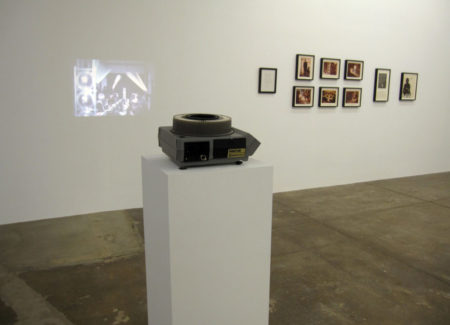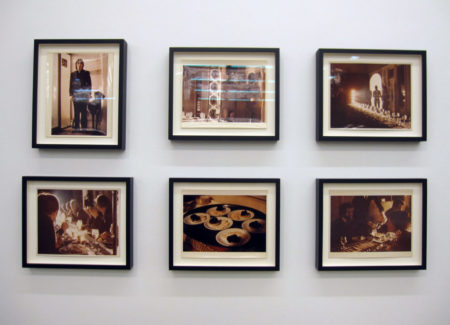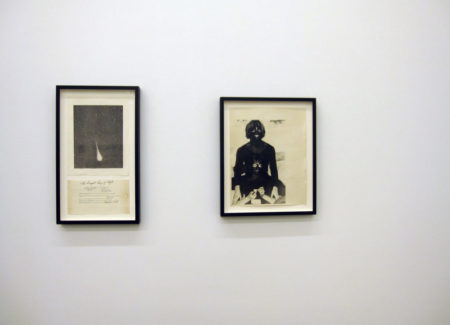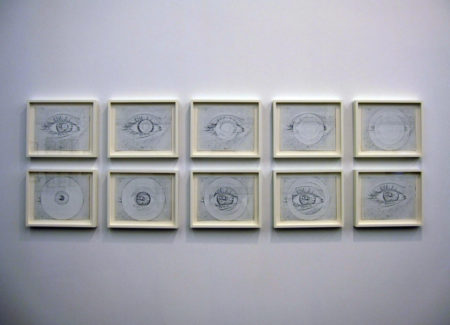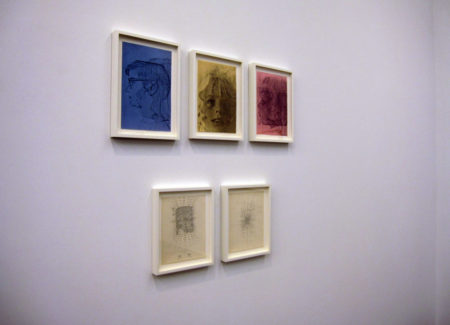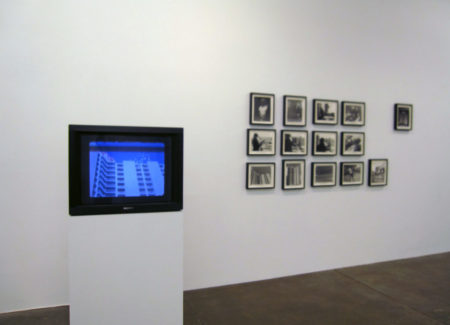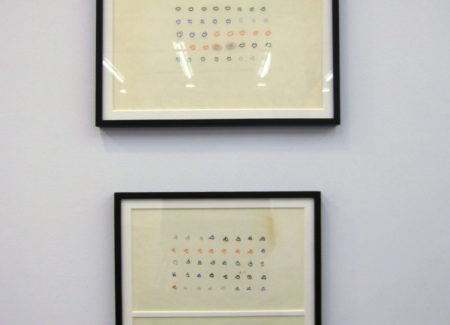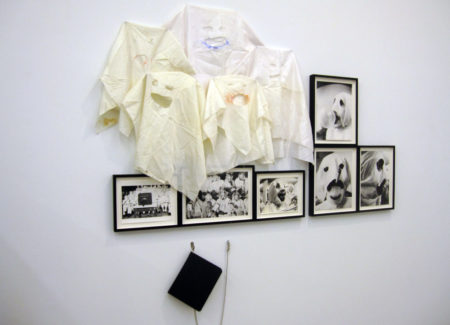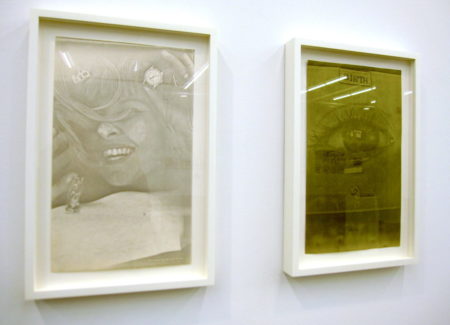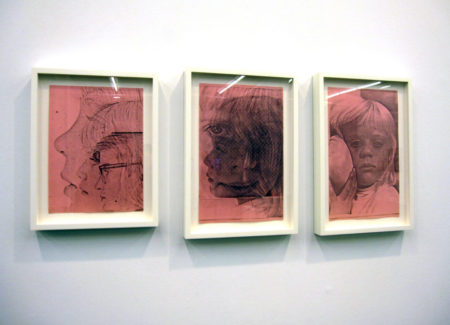JTF (just the facts): Nine groups numbering between 1 and 10 individually framed Xeroxes; three Xerox sculptures; one set of individually framed PDF10 computer prints on white sprocketed gate-folded paper; and multimedia documentation of three performance works installed in the main gallery space. The framed Xeroxes range in size from 11 x 8 inches to 14 x 8 ½ inches. Each individually framed computer print measures 11 x 9 ½ inches. The Xerox sculptures measure 9 ½ x 12 x 1 ½ inches, 11 ¼ x 8 ¾ x 3 inches, and 12 x 9 ½ x 1 ¾ inches respectively. (Installation shots below.)
Comments/Context: Barbara T. Smith’s second exhibition at Andrew Kreps should advance the growing reputation of this important and still underknown artist. Comprising Xerox works from 1965–66 and documentation of three performance pieces from the early to mid-1970s, it shows Smith sculpting, drawing, and printing, as well as creating video, conceptual, and performance art, pushing traditional media to their limits and experimenting with new forms and technologies.
Born in 1931, Smith graduated from Pomona College in 1953 with a degree in painting. By 1965, galvanized by her encounters with advanced art at the Pasadena Art Museum, where she volunteered, she rented a 914 Xerox machine and installed it in her dining room. The show includes some of the multitude of works she made by Xeroxing her belongings, her body, and photographs of her children, building up images in layers or creating sequential ones by progressively adding to the items on the Xerox machine’s glass plate.
Like much of her work, Smith’s Xerox pieces are deeply personal. In her late 30s at the time, Smith was struggling to reconcile artmaking with the demands of marriage and motherhood. In a series of ten images of a woman’s eye, a white circle like a mandala seems at first to radiate outward from the eye’s pupil and then to be reabsorbed by it, suggesting Smith’s hunger for new ways of looking at the world and at herself. In several other pieces, including a group of montages of children’s faces on pink paper, the sense of loss is palpable.
Of particular interest are three photo-sculptures made from stacks of identical photocopies sandwiched between sheets of Plexiglass. Resembling game boards or giant memo pads, they are both Minimalist sculptures and indexical objects that, like works such as Robert Rauschenberg’s Automobile Tire Print of 1953, record the passing of time.
Following the breakup of her marriage in 1968, Smith took a workshop with Alex Hay, a member of the Judson Dance Theater in New York, and began making performance art. She returned to school in 1969, earning an MFA in 1971 from the University of California, Irvine—where her fellow students included Chris Burden and Nancy Buchanan. One of her most famous performance works of this period (it was included in the 2007 exhibition “Wack! Art and the Feminist Revolution” at the Museum of Contemporary Art, Los Angeles) is Feed Me (1973), for which Smith sat naked on a mattress during an all-night performance festival surrounded by items such as food, wine, and massage oil, while a looped tape repeated the words “feed me.”
The performance works documented here, though made around the same time as Feed Me, did not involve the same degree of personal risk. The Longest Day of Night, produced at the end of 1973, was a sort of Mad Hatter dinner party, at which guests ate only black food, in honor of the comet Kohoutek’s arrival. Outside Chance (1975) was a performance during which Smith, dressed like a femme fatale from a 1930s detective film (and looking a lot like Cindy Sherman) dropped 3000 computer-generated drawings of snowflakes from a balcony at the Plaza Hotel in Las Vegas.
More complex is Smith’s 1974 performance piece Scan 1. Part happening and part conceptual exercise, it starts with an extraordinary video compilation—a work of art, or perhaps of social commentary, in itself—of family-themed advertisements for such products such as Skippy peanut butter, Wonder Bread, the oral pain reliever Ambesol, Miracle White skin lightening cream, White Rain, Formula 409, Snarol snail and slug killer, and Liv-a-Snaps treats for dogs. Forty hooded participants, seated on bleachers, were asked to respond to hidden cues in the video by blowing bubbles with bubble gum, tooting party blowers, or puffing on cigarettes. Quickly—and hilariously—order breaks down.
The piece captures the spirit of improvisation that exists in all of Smith’s work. Happily, like the exhibition itself, it reveals an artist furiously dissolving boundaries—between disciplines and between art and life—as fast as she can.
Collector’s POV: The groups of individually framed Xeroxes are priced between $10000 for a single Xerox and $28000 for a group of ten Xeroxes. The set of individually framed computer prints is $20000. The Xerox sculptures are $18000 each. The three performance archives, which include photos and ephemera not on view, are priced between $100000 and $150000. Smith’s works have appeared very infrequently in the secondary markets for photography and contemporary art in the past decade, so gallery retail likely remains the best option for those collectors interested in following up.
